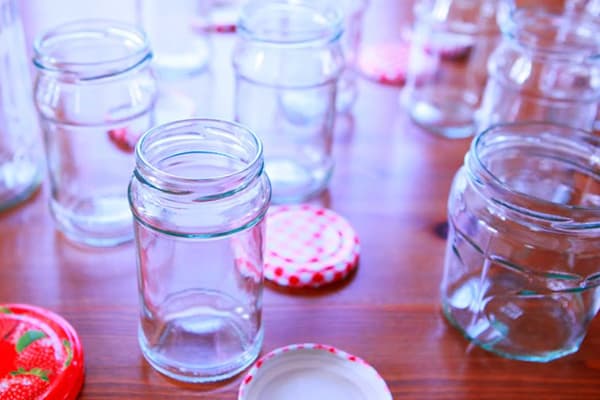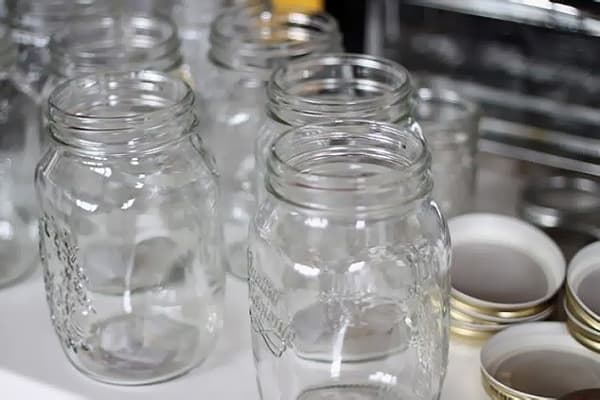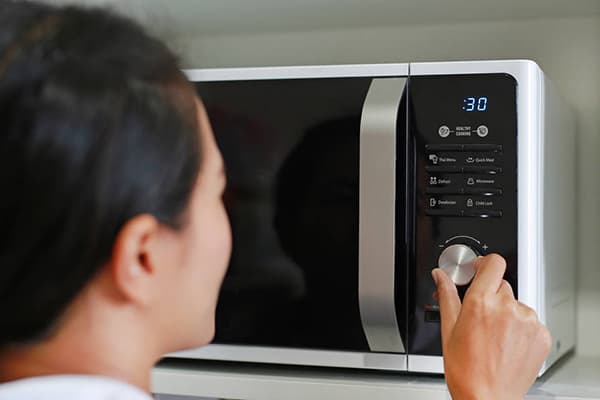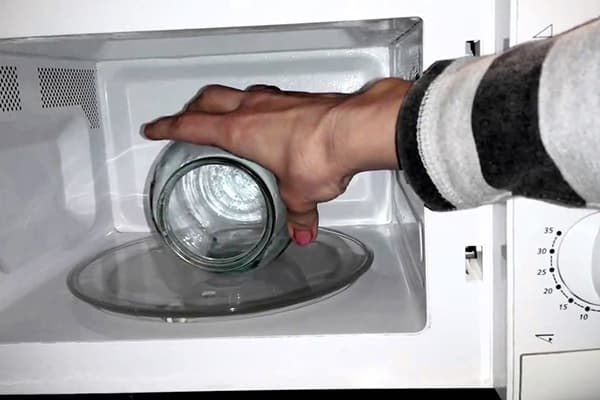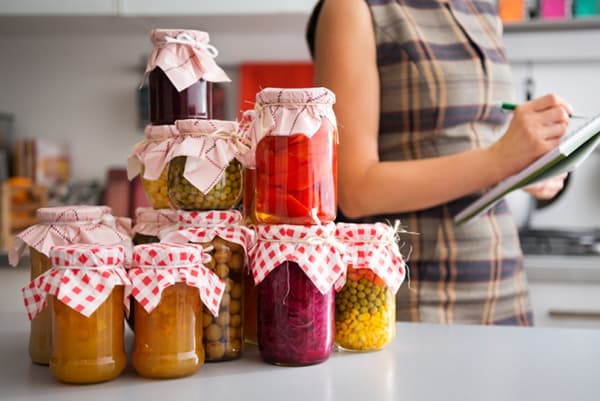Is it safe to say that it is safe to microwave a glass jar of soup?
It is logical that the combination of glass and heat in many people is apprehensive. Is it possible to heat food in a microwave in a glass jar? Yes, but you need to adhere to some rules so that the glass does not crack, the microwave is not damaged and everyone is happy and full.
Glassware is recommended for use in the microwave, if it is not thin. In this sense, refractory glass containers are ideal. But the usual cans for seals well tolerate the microwave effect.
Do not use cracked glass!
The glass in the jars is usually quite thick, so they are great for a microwave - but only if there are no cracks, chips, or even air bubbles.
Before warming the jar in the oven, you need to carefully inspect the bottom and walls. If you don’t notice something, the bank will crack. This can happen both during cooking and at the moment when you get food. It’s easier to carefully examine everything than to treat cuts.
No lids!
Be sure to remove the cover. If the steam does not leave the can, high pressure will build up inside the dishes. At best, it will tear off the lid. At worst, it will simply tear the jar apart, and the bowl of soup will turn into a bunch of shards. And if the lid is also metal, then the microwave is likely to catch fire, or even explode. You also need to make sure that there are no gilded patterns and ornaments on the bank.
How to boil water in a jar?
This process requires great care. It is best to drop a wooden spoon into the jar, so that the microwave radiation will spread evenly on the jar. So the dishes will not be damaged, and the water will heat well. And yet, if there is such an opportunity, it is much safer and more convenient to boil water in the old fashioned way, in a teapot.
How to sterilize a jar?
Sterilizing glass containers in the microwave is simple, fast and effective. The furnace will quickly get rid of harmful microorganisms that are dangerous to human health and even human life. Moreover, unlike conventional methods, unbearable heat and high humidity will not reign in the room.
First of all, you need to thoroughly wash the jars, getting rid of any traces of detergents. It is best to use baking soda.
Carefully inspect glass containers for cracks and other damage. If any, do not use these banks in any case.
Then proceed as follows:
- Pour some water - just a couple of centimeters. So you can protect the dishes from damage. It is better to use water from the filter so that there is no plaque on the bottom of the can.
- Put the jar in the oven. Never use the lid.
- Set the power to approximately 700 watts.
- Sterilization time depends on the volume of the can. Disinfection of a three-liter capacity will take about 5 minutes. In any case, boiling will help you orient yourself: after the water has boiled, you need to wait a minute or two and turn off the microwave. The resulting steam kills all harmful microbes.
4-5 small cans are placed in one oven. A three-liter jar breaks in only sideways. It must be well fixed by putting it on a cotton towel or plate.
The towel and tack that you pull the can out of the oven should not be wet. Humidity will lead to a temperature drop, because of which the glass will burst safely, ruining the whole undertaking. It’s better not to tackle the neck.
In cans that have not yet cooled, it is better to put hot canned food, in cooled ones - cold.
If you want the can to be sterilized, remaining dry, you need to put a glass next to it. It should be filled with water more than half, but not completely. Somewhere on 2/3. If the glass is completely filled, in the process of boiling water will pour out of it.
In the microwave, you can immediately sterilize containers with blanks:
- Pour a little water into the cans with blanks for steaming.
- Place the containers in the oven for 5 minutes.
- Carefully remove the cans with dry tacks.
The beneficial properties and taste of vegetables and fruits will not be lost, since radiation will not affect them for long.
The whole and thick glass perfectly tolerates the effects of a microwave oven. With proper operation, there is nothing to fear. In addition to warming up the soup, you can do a lot of other interesting things with the microwave and can, for example, frothed milk for latte. The main thing is to be careful.
